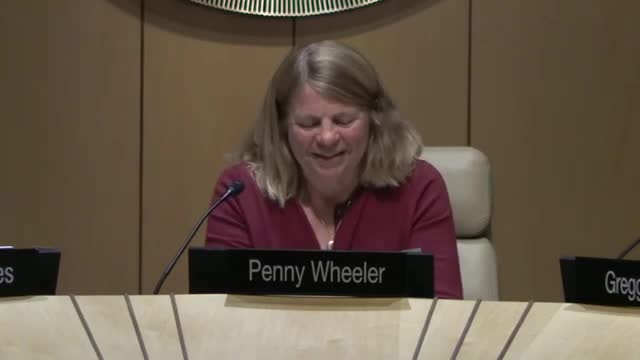University staff outline budget process and Responsibility Center Management model to Regents
October 10, 2025 | University of Minnesota, Public Universities Board of Trustees Meeting, School Boards, Minnesota
This article was created by AI summarizing key points discussed. AI makes mistakes, so for full details and context, please refer to the video of the full meeting. Please report any errors so we can fix them. Report an error »

University budget leaders presented an overview of how the President’s recommended operating budget is developed and how the university uses the Responsibility Center Management (RCM) model to translate systemwide priorities to unit budgets.
Vice President and Budget Director Julie Tonneson and Assistant Budget Director Corinne Zewers (presented in transcript as Corin/Corinne) said the session was educational and intentionally did not include specific dollar proposals for FY 2027. Tonneson explained that the presentation covered funding sources (budget framework funds such as state appropriation and tuition versus non‑framework funds such as fees and clinical income), the actors involved in the process (President, Executive Budget Committee, unit leaders), and the timeline that leads to the President’s recommended budget in June.
Tonneson described the budget model in use — Responsibility Center Management — and summarized key mechanics: generated revenues are attributed to the RRCs that generate them; tuition is split 75% to the unit of instruction and 25% to the unit of enrollment; state appropriation is allocated to academic units by incremental base decisions; support unit costs are allocated to academic units through cost pools. The university’s major budgeting units include 50 RRCs (academic and support units). Tonneson and Corinne gave concrete examples (experiment stations revenue cited at about $15.6 million and the Medical School with revenues over $980 million) to illustrate the diversity of unit budgets and why each unit’s balancing decisions are unique.
Presenters and Regents discussed advantages and disadvantages of RCM: transparency and incentives to increase revenue, but risks of siloing and reduced automatic incentives for interdisciplinary work. President Cunningham and other Regents noted the model’s widespread use across higher education and emphasized ongoing review and committee work to tweak the model where necessary.
Tonneson and Corinne said a committee recently reviewed the model and recommended retaining RCM with technical adjustments; the provost and CFO will consider the committee’s recommendations as part of ongoing model refinement.
Vice President and Budget Director Julie Tonneson and Assistant Budget Director Corinne Zewers (presented in transcript as Corin/Corinne) said the session was educational and intentionally did not include specific dollar proposals for FY 2027. Tonneson explained that the presentation covered funding sources (budget framework funds such as state appropriation and tuition versus non‑framework funds such as fees and clinical income), the actors involved in the process (President, Executive Budget Committee, unit leaders), and the timeline that leads to the President’s recommended budget in June.
Tonneson described the budget model in use — Responsibility Center Management — and summarized key mechanics: generated revenues are attributed to the RRCs that generate them; tuition is split 75% to the unit of instruction and 25% to the unit of enrollment; state appropriation is allocated to academic units by incremental base decisions; support unit costs are allocated to academic units through cost pools. The university’s major budgeting units include 50 RRCs (academic and support units). Tonneson and Corinne gave concrete examples (experiment stations revenue cited at about $15.6 million and the Medical School with revenues over $980 million) to illustrate the diversity of unit budgets and why each unit’s balancing decisions are unique.
Presenters and Regents discussed advantages and disadvantages of RCM: transparency and incentives to increase revenue, but risks of siloing and reduced automatic incentives for interdisciplinary work. President Cunningham and other Regents noted the model’s widespread use across higher education and emphasized ongoing review and committee work to tweak the model where necessary.
Tonneson and Corinne said a committee recently reviewed the model and recommended retaining RCM with technical adjustments; the provost and CFO will consider the committee’s recommendations as part of ongoing model refinement.
View full meeting
This article is based on a recent meeting—watch the full video and explore the complete transcript for deeper insights into the discussion.
View full meeting
